
Much of the world is starving. The disruption of the global grain supply caused by the Russia-Ukraine Invasion and the global food crisis derived from abnormal climate changes have emerged as severe social issues. However, smart farming has been rising as a solution to the food crisis. The Sungkyun Times (SKT) would like to look into the concept of smart farms and the technology’s possible implications, as well as expected future development.
Smart Farm, the Intelligent Farmer
A New Wave of Agriculture, the Smart Farm
A smart farm refers to a greenhouse, or farm, that is operated through an integration of information and communication technology (ICT) and agricultural technology. Farmers can remotely and automatically manage and maintain optimal environments for the growth of crops and livestock. Smart farms are often utilized in farming nowdays and give a huge help to farm management and crop distribution. The term “smart farm” is only used in Korea; it is a localization of the term “precision agriculture” used in the United States. Like smart farms, precision agriculture maximizes efficiency by combining geostatistic and geographic information systems (GIS). Smart farms became popular in Korea in the mid-2000s. From the U-Farm project in 2016 to the Smart Farm Diffusion Plan in 2018, the Korean government has continuously implemented policies to further promote the development of smart farms. Boosted by such supports, smart farm technology that enables the production of Seolhyang strawberries all year round was recently invented. Likewise, smart farms are taking hold in the Korean agriculture market.
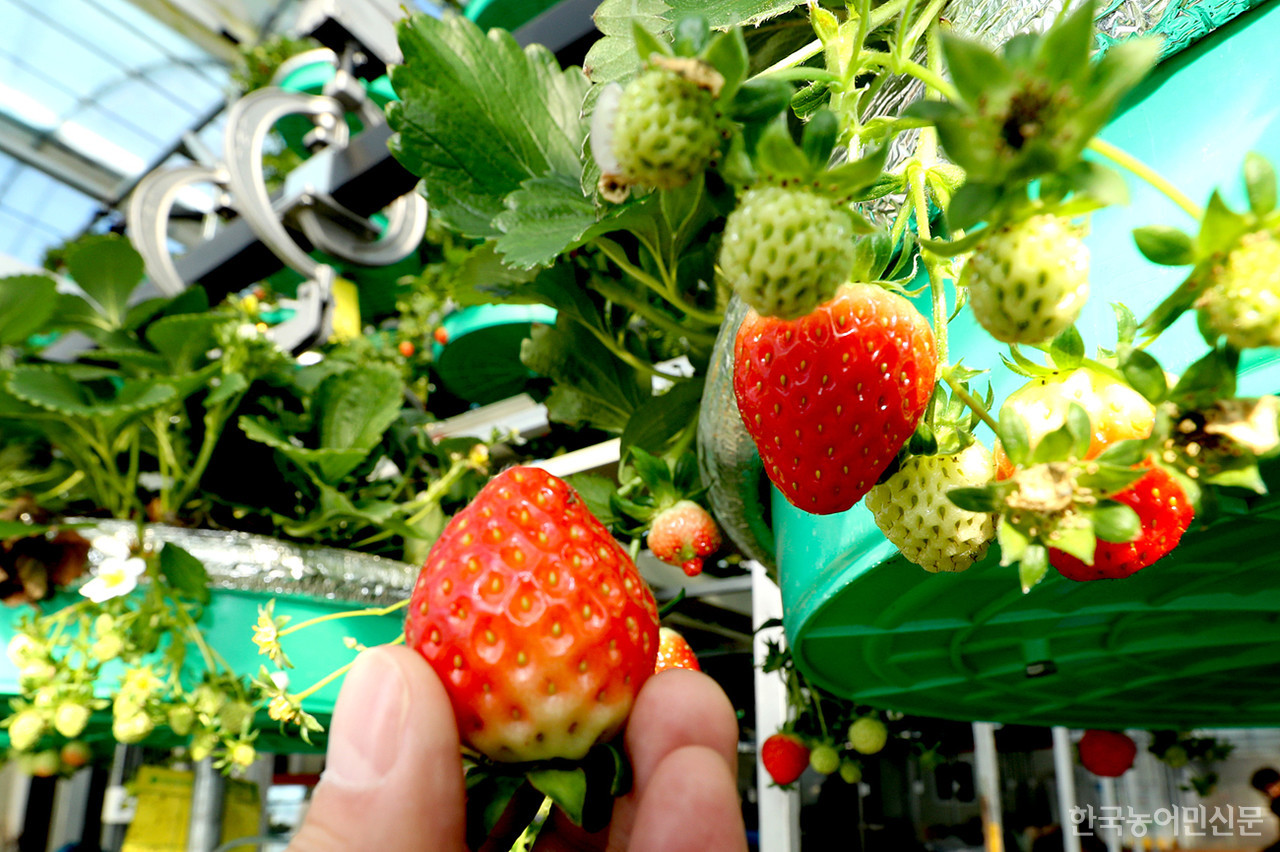
Smart Farms These Days
Smart farms are classified into three generations based on each technology’s main goals and functions. The first-generation smart farms concentrated on reinforcing convenience. The technology involved installing a remote control system operated by farmers’ direct orders. As of 2022, smart farms have evolved into second-generation smart farms, along with an enhancement in crop productivity. Smart farms now use big data and artificial intelligence (AI) to create an ideal environment for crop growth. Finally, The third generation aims to enhance sustainability and allows farmers to cultivate high-quality crops through the use of robots. Examples of smart farms include indoor vegetable cultivators and vertical farming. The indoor vegetable cultivator, which is representative of second-generation smart farms, controls the environment using light-emitting diodes (LEDs), temperature, and water regulators. On the other hand, vertical farming is a smart farm that uses vertically arranged structures that enable hydroponics to grow crops artificially indoors. The metro farm, an eco-friendly farm installed in subway stations, is an example of vertical farming.
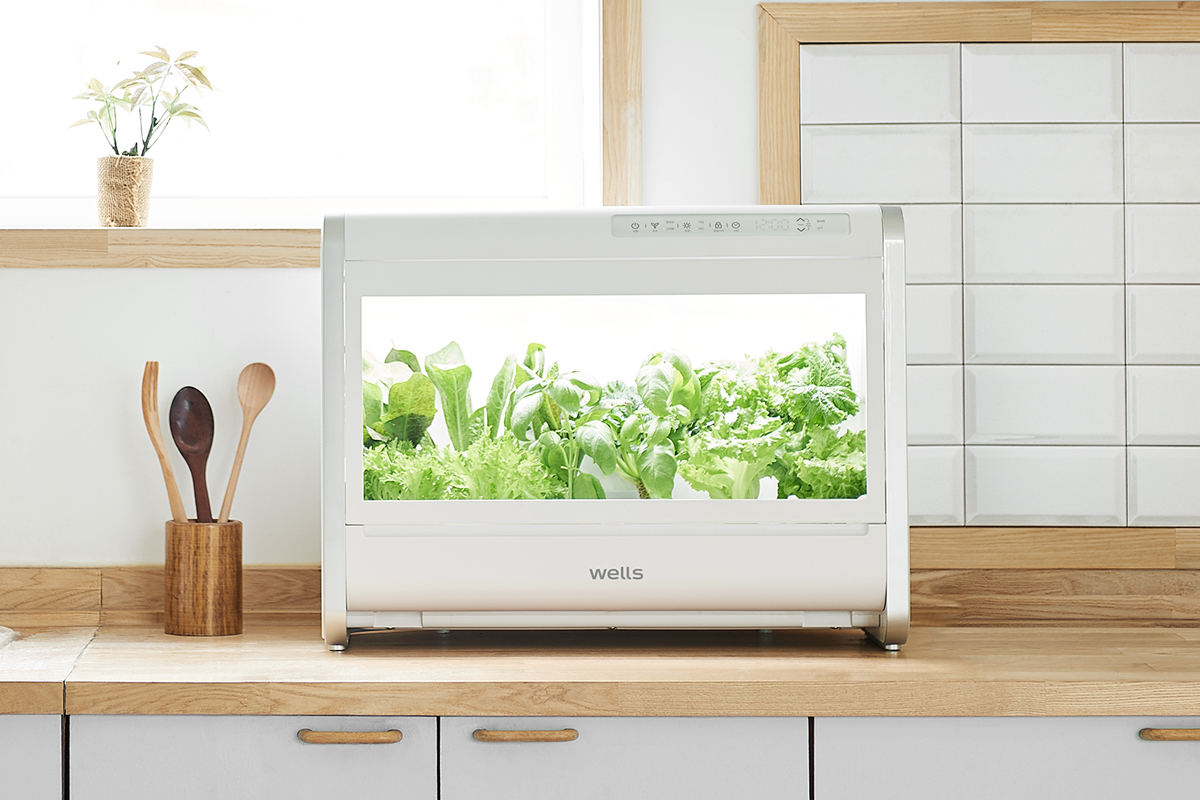
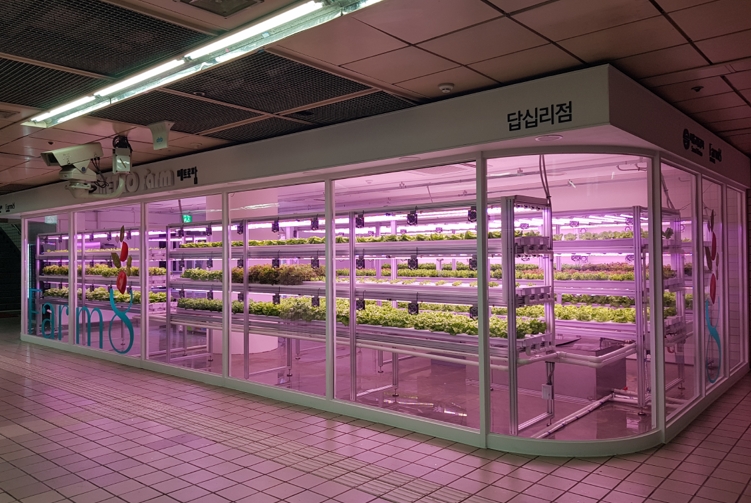

Smart Farms in Korea: Salvation or Invasion?
Positive Views
1. More Crops, Less Labor
Smart farms can steadily produce high-quality crops by controlling the external environment and preventing any factors that can harm crops or livestock — therefore, they are much more efficient. This consistency in production eventually leads to a consistency in crop prices as well. For instance, last autumn, the cost of lettuce rose more than four times due to abnormal weather conditions. However, lettuces grown in smart farms were supplied to the market at the usual price. In addition, smart farms, especially secondgeneration ones, can reduce the farmers’ working hours: connection network systems, such as cloud computing services, can be utilized to share accumulated agricultural data. Since smart farms collect data related to the growth of crops through the sensors used in farming, farmers can dramatically lessen the time required to search for information. For instance, according to research conducted by the Ministry of Agriculture, Food and Rural Affairs (MAFRA) in 2020, the labor hours of farmers who adopted smart farms were reduced from 278 hours to 234 hours annually, which is a 16% decrease.
2. Influx of New Workers to the Farming Industry
Smart farms are key to solving labor shortages in the Korean farming industry. According to the National Statistical Office, the farming population in 2021 was 23.9% lower than in 2012, and the aging rate of farming families was 46.8%, about 2.7 times higher than the national average. The shrinking and aging of the farming population has eventually led to a decline in crop production. However, an influx of young farmers along with the development of smart farms could be a possible solution to this social issue. Many in their 20s and 30s (the 2030 generation) have been attracted by the government’s support and increasing success stories of smart farm start-ups. Accordingly, the government announced the Smart Farm Diffusion Plan in 2018 to foster the youth to engage in farming. The plan offered a “start-up consultancy program” to help those in the 2030 generation with no experience in agriculture to engage in smart farming. Due to the program, smart farming has produced more than 600 experts. Likewise, the increase of young farmers using smart farms would usher in a new phase to the precarious domestic agriculture market.
Negative Views
1. Lukewarm Reactions of Farmers
Farmers have been quite apathetic toward smart farms despite support from the government. First of all, financial issues prevent most farmers from installing smart farms. Since the price to adopt facilities with smart farm technology exceeds ₩1 billion, investing in a smart farm is a massive burden for most farmers. Furthermore, the uncertainty about smart farms’ profitability remains. Park Soon-ah, a farmer who has run a farm in Paju City for about 40 years, commented, “Frankly, there is no concrete reason for me to install the technology on my farm.” Moreover, smart farms are still criticized for its unresolved technical flaws. For instance, in a smart farm installed in Dangjin City in 2021, the farm’s crops froze to death due to a breakdown in the heating equipment. Hence, farmers cannot always trust the stability of smart farm technology. Finally, the lack of corporate investment in smart farms has also weakened local farmers’ expectations. As of now, only a few small enterprises are offering entry-level models to farmers. In contrast, major companies are refusing to participate in the business due to government restrictions and farmers’ resistance.
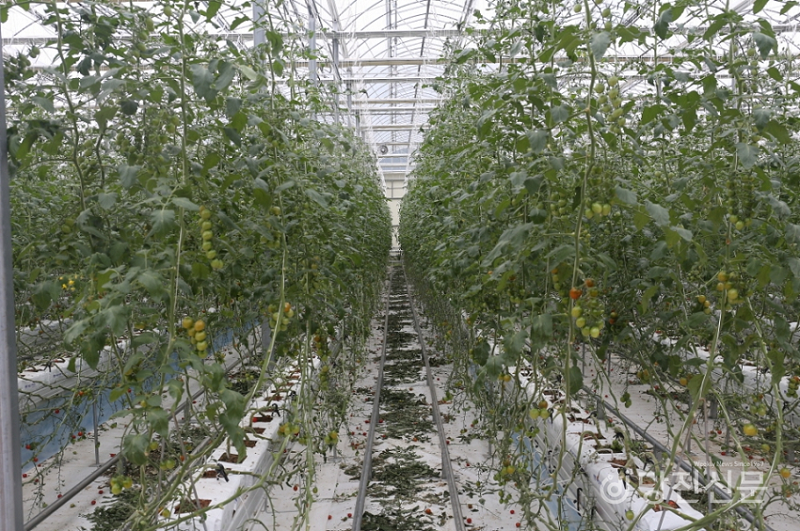
2. Policies Diverted from Reality
In addition to the farming community’s reactions, current government policies have been pointed out as an obstacle to implementing smart farms in Korea. For instance, the Smart Farm Diffusion Plan has been criticized for encouraging the collapse of the agriculture industry, as its goal is to increase crop production. This could induce overproduction, which eventually may lead to a price war. Since crops cultivated by smart farms are currently limited to profitable items such as strawberries and tomatoes, the price of these crops has plunged. On the other hand, government policies that plan to induce the young to farming might force them to gamble with unstable technology. Because of the short history of smart farms, the lack of related information cannot be fully supplemented by education programs. The absence of a big data collection, management, and distribution system also inhibits farmers from using smart farm technologies. Likewise, government policies that only pursue the quantitative expansion of smart farms without considering practical problems may be merely an illusory dream.
Ways to Implement Smart Farms in Korea
Gaining Support from the Farmers
The government has implemented various economic policies to lessen the burden of smart farm investment. The Korea Agency of Education, Promotion and Information Service in Food, Agriculture, Forestry and Fisheries (EPIS) is annually qualifying its graduates to apply for the Comprehensive Smart Farm Loan for Young Farmers, enabling outstanding graduates to live on a rental farm in Smart Farm Innovation Valley. In addition, MAFRA has increased support for existing farmers and announced that they will install rental farms in Smart Farm Innovation Valley for farmers by 2023. A quick response system for technical flaws could also solve the hesitation in investing. In 2021, the Rural Development Administration (RDA) invented an authentication system that verifies sensors and actuators of facilities so that farmers can rapidly react to technical issues. Moreover, according to a report by the National Assembly Budget Office (NABO), the government plans to further develop the second and third generations of smart farm technology. Kim Yong-ryul, a senior researcher of the Korea Rural Economic Institute (KREI), commented, “Korea’s grain exports could increase signficantly by actively applying smart farm technology. We could even expect a self-sufficient society in the future.”
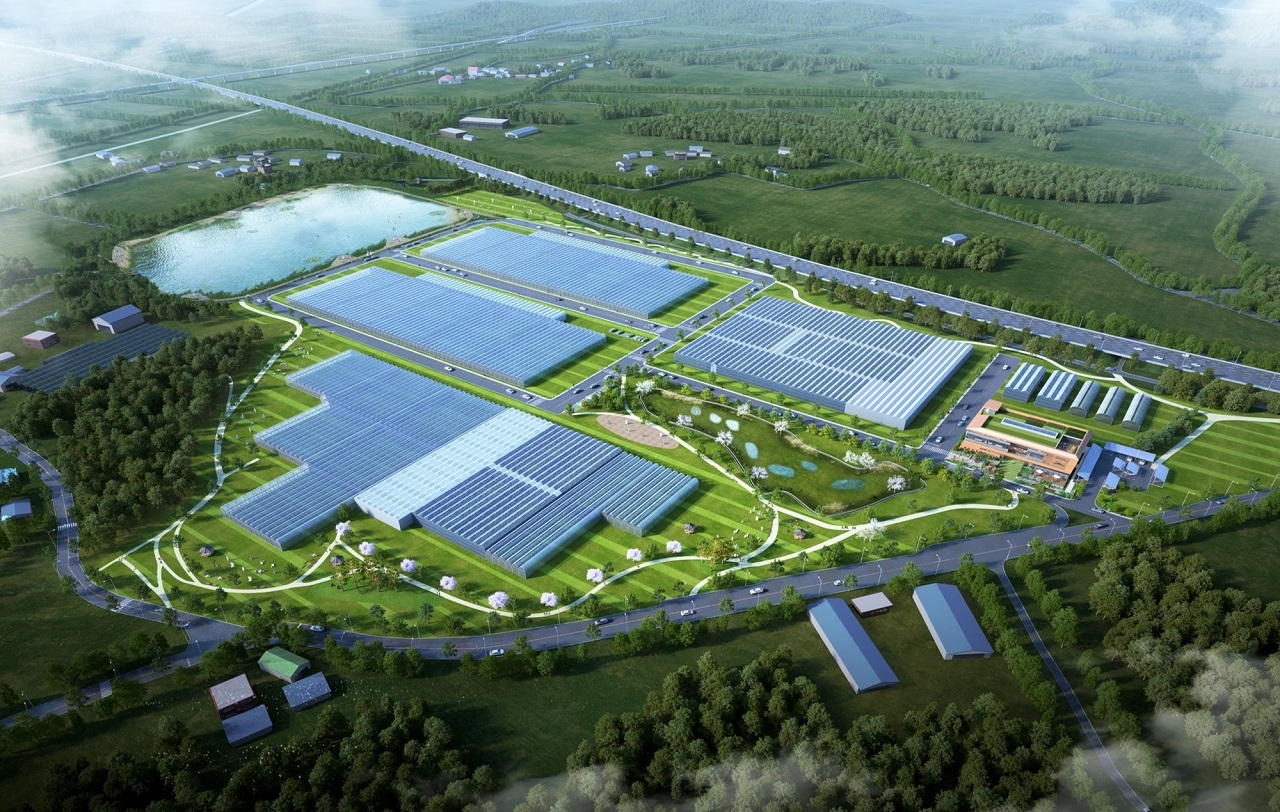
Set the Right Direction for Future Technology
The government’s role in distribution and sales is essential for the symbiosis between the farmers and smart farms in Korea. The government needs to allow companies to tap into new markets to dispel concerns over the price war triggered by major companies’ entries. Furthermore, technological innovation to diversify crop areas is necessary. Yoo Do-il, a professor of Agriculture and Resource Economics at Seoul National University, remarked, “To alleviate farmers’ worries, we need to extend the range of crops to which smart farms are applied. It is necessary to apply the technology to high value crops, such as medicinal plants.” Only then will the price war in particular crops be eased, and the government could induce farmers to enter the smart farm industry. Finally, the data used for the successful administration of smart farms should be opened to the public. Since data on smart farms are collected exclusively by organizations such as the RDA and EPIS, releasing such data could help farmers and private enterprises. With such improvements, smart farms could serve as a perfect solution for the current food crisis and would bring about a shift to the Korean agriculture industry.
There is no controversy that smart farms are an innovative technology that would lead the fourth industrial revolution in Korea. However, solving shortcomings such as technical flaws and the direction of related policies is needed for both the government and farmers. With the cooperation of associated parties, smart farms will surely become even smarter. The SKT hopes Kingos will cheer for the future of smart farms.
